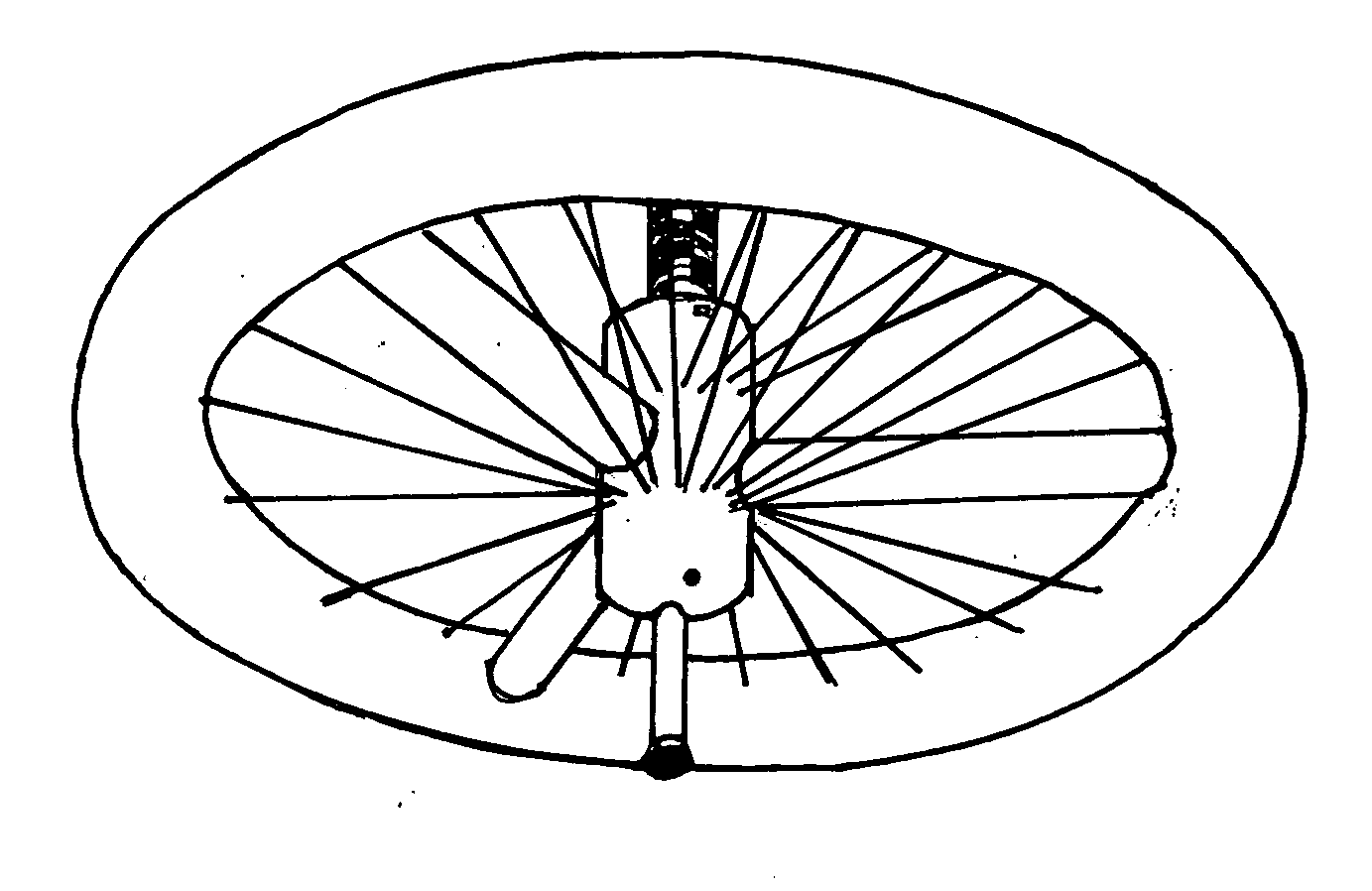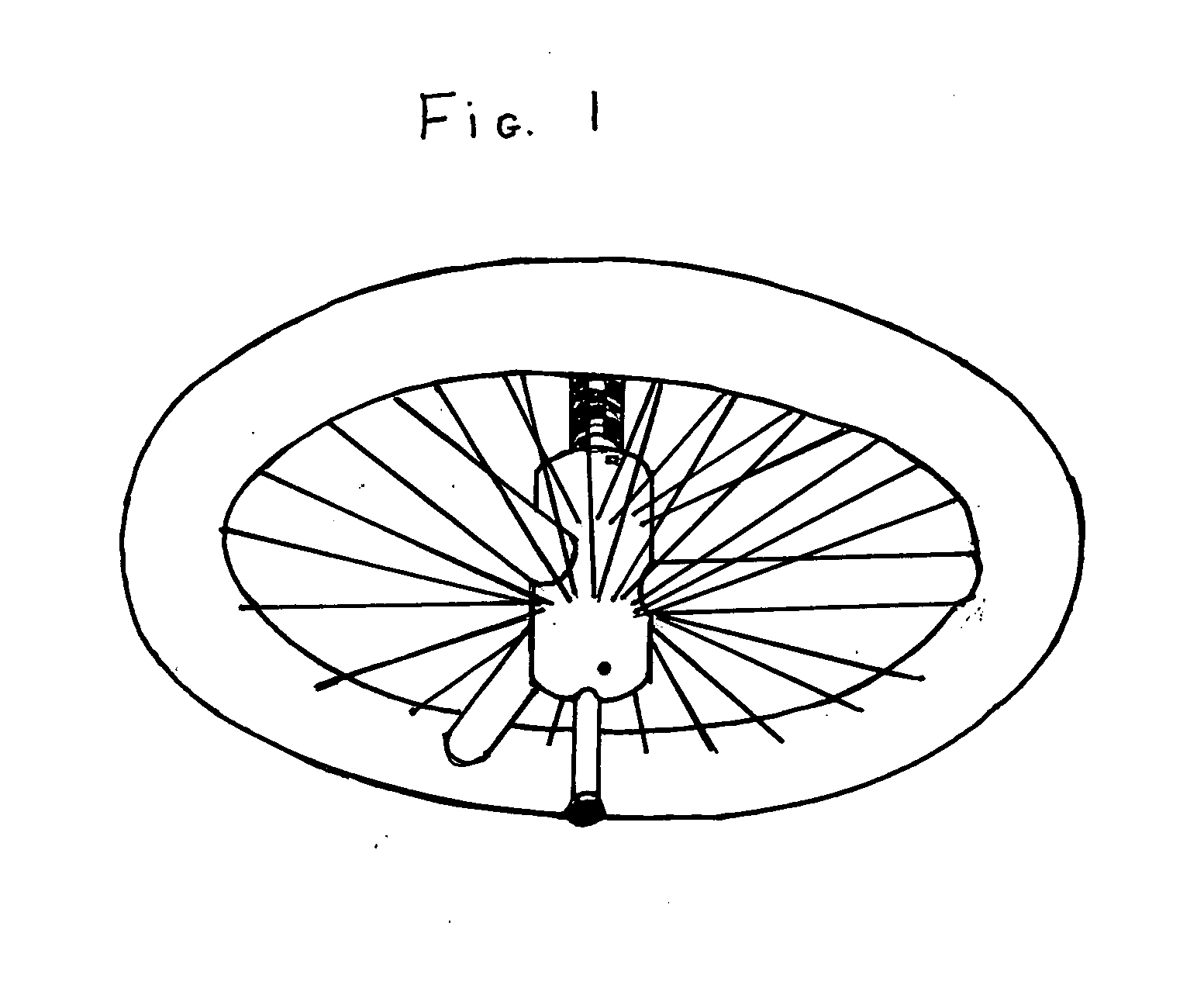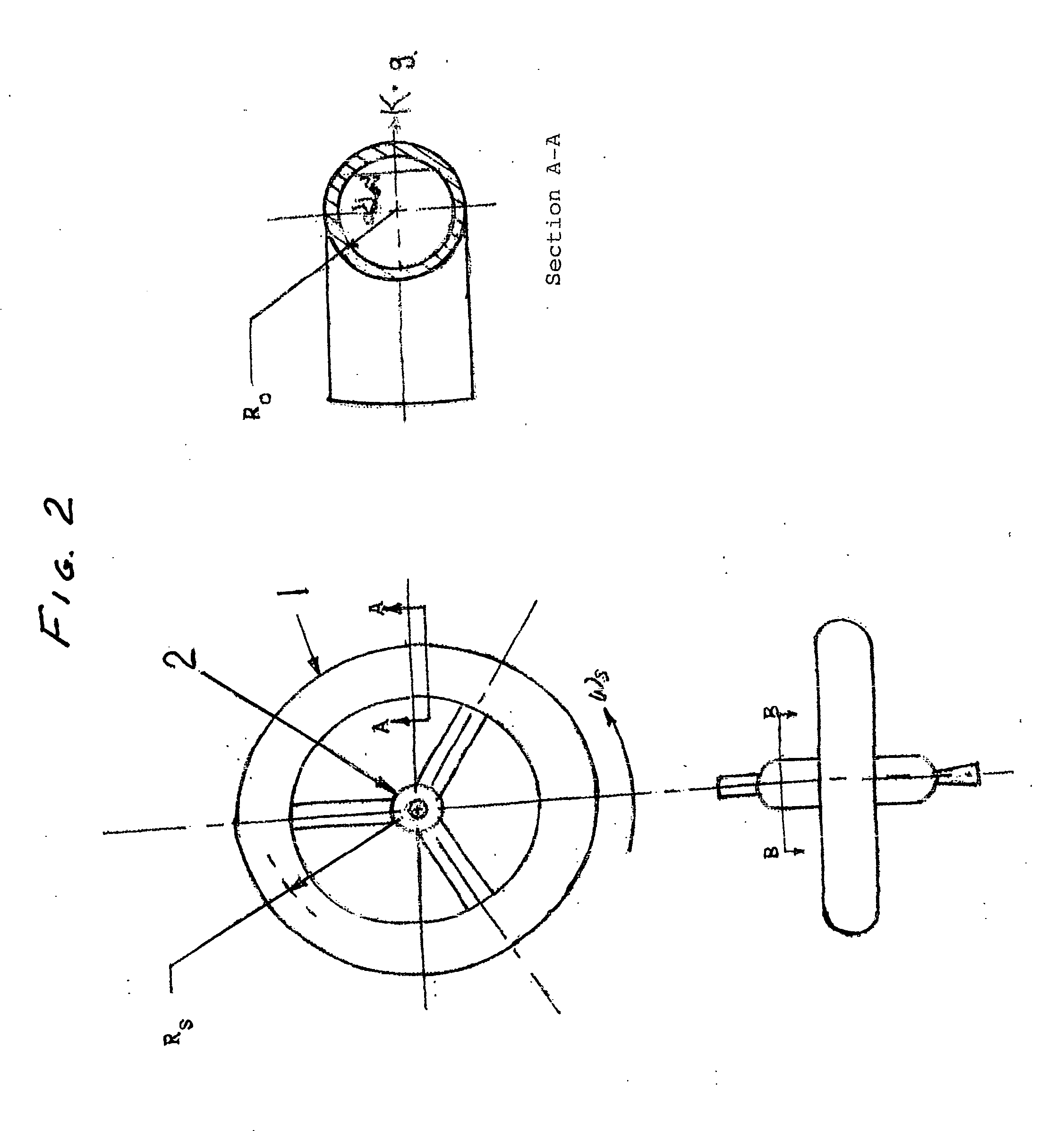Mechanism for stabilizing and creating a variable gravitational field in a toroidal space station
a technology of gravitational field and toroidal space station, which is applied in the direction of cosmonautic vehicles, cosmonautic crew accommodation, transportation and packaging, etc., can solve the problem of too dangerous to be returned to earth
- Summary
- Abstract
- Description
- Claims
- Application Information
AI Technical Summary
Benefits of technology
Problems solved by technology
Method used
Image
Examples
Embodiment Construction
[0051]This invention is intended to support a rotating space station, which can be a complete toroid or one of a similar design with modifications for specific functions. For example, FIG. 4 also shows a toroidal type station, but with pods rather than a complete torus. Such pods could be research stations for conducting studies on materials considered too dangerous to be on Earth, such as certain bacteria or viruses or highly toxic chemicals. At the end of design life or in the event of an emergency, such pods could be jettisoned into the sun for disposal.
[0052]FIG. 1 is a schematic of the space station of FIG. 1. With a mean radius (Rs) of the toroidal ring of 50M, the angular velocity required to produce an equivalent gravitational acceleration in the torus equal to k·g is
ωs=k·g / Rs=0.433krad / s=4.23krpmEqn.(1)
Here g is Earth's gravitational acceleration (9.8M / s2). k is a constant representing the fraction of Earth's acceleration to be achieved. If k=1, Earth's gravity is simulated...
PUM
 Login to View More
Login to View More Abstract
Description
Claims
Application Information
 Login to View More
Login to View More - R&D
- Intellectual Property
- Life Sciences
- Materials
- Tech Scout
- Unparalleled Data Quality
- Higher Quality Content
- 60% Fewer Hallucinations
Browse by: Latest US Patents, China's latest patents, Technical Efficacy Thesaurus, Application Domain, Technology Topic, Popular Technical Reports.
© 2025 PatSnap. All rights reserved.Legal|Privacy policy|Modern Slavery Act Transparency Statement|Sitemap|About US| Contact US: help@patsnap.com



